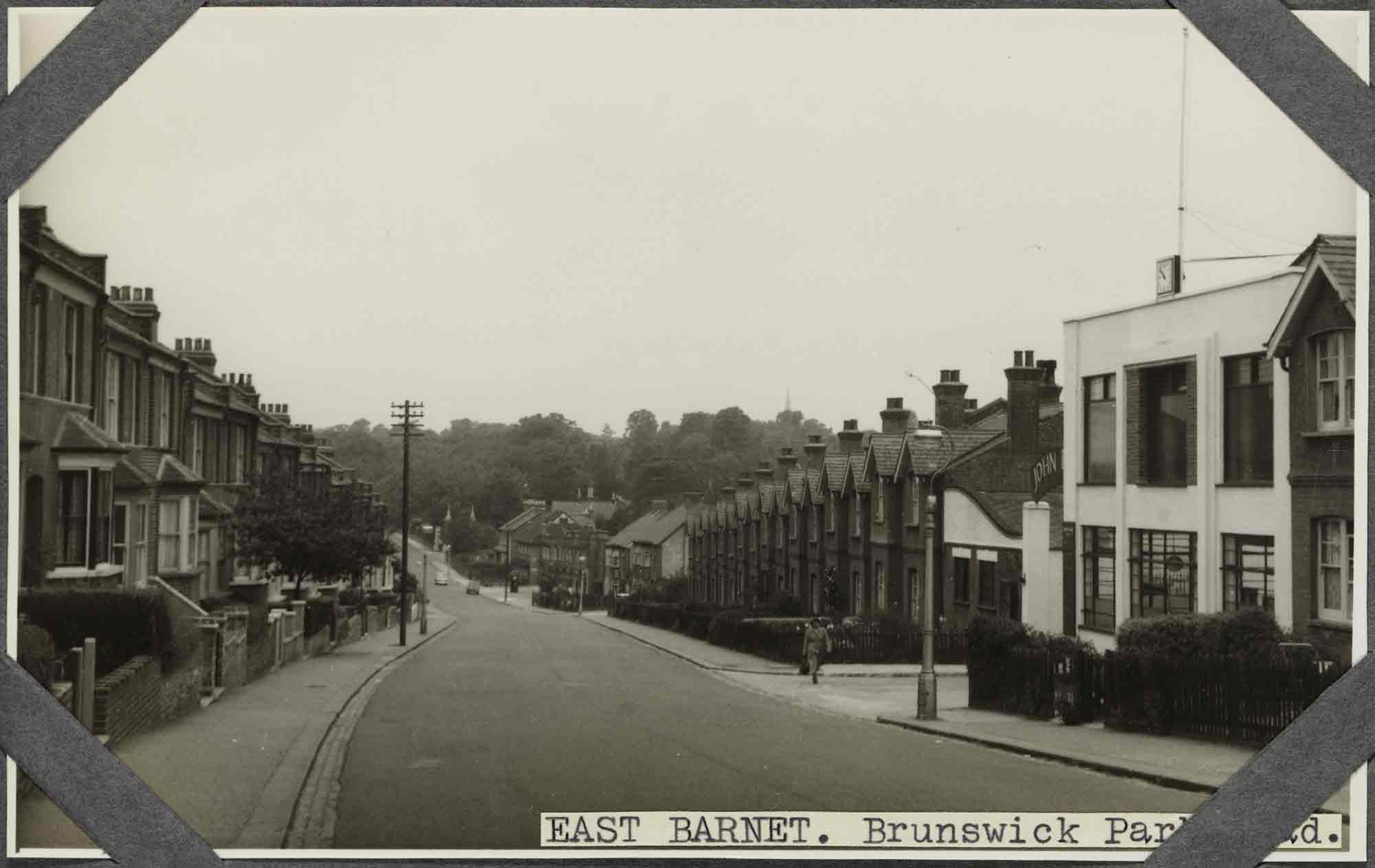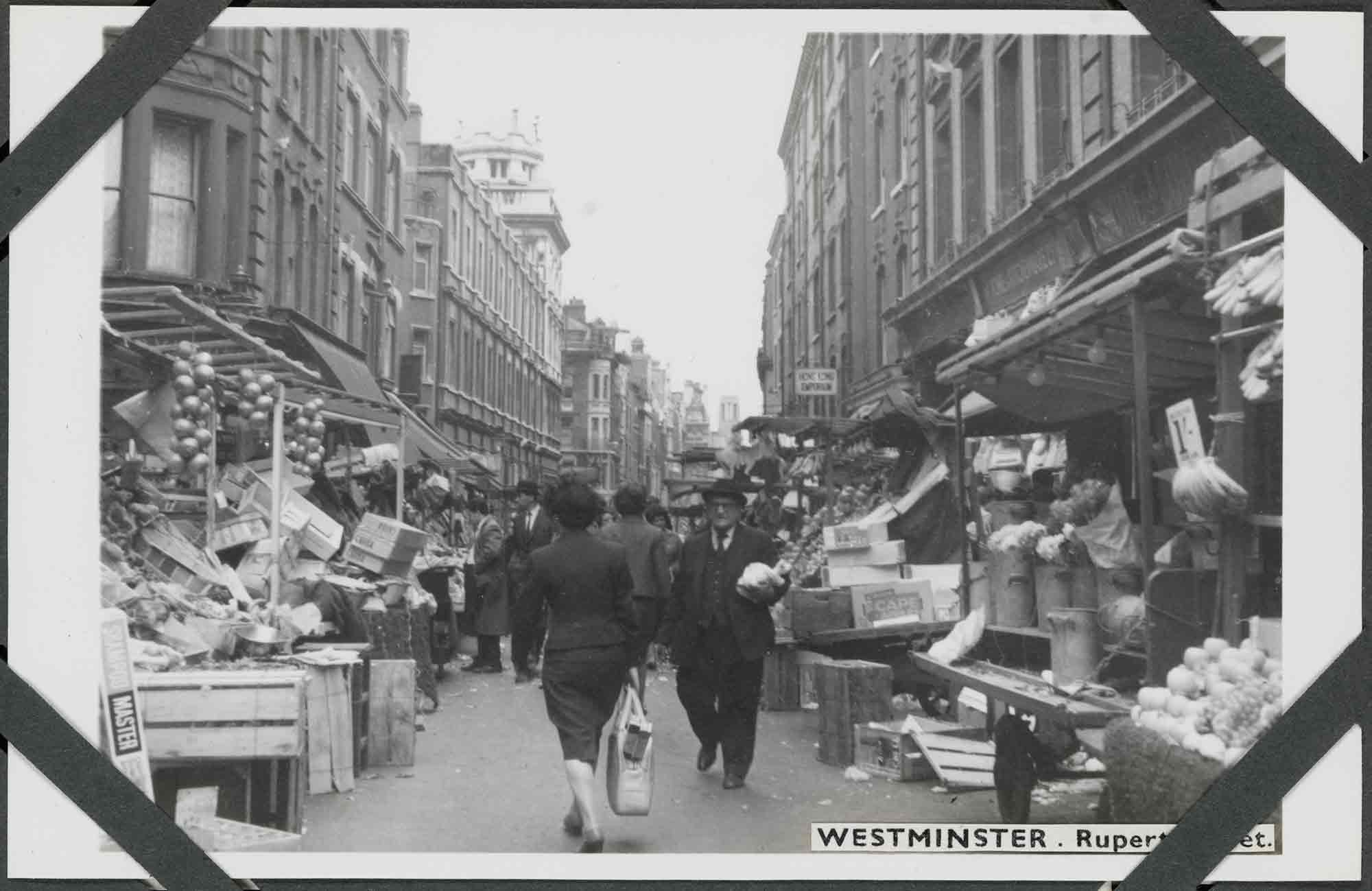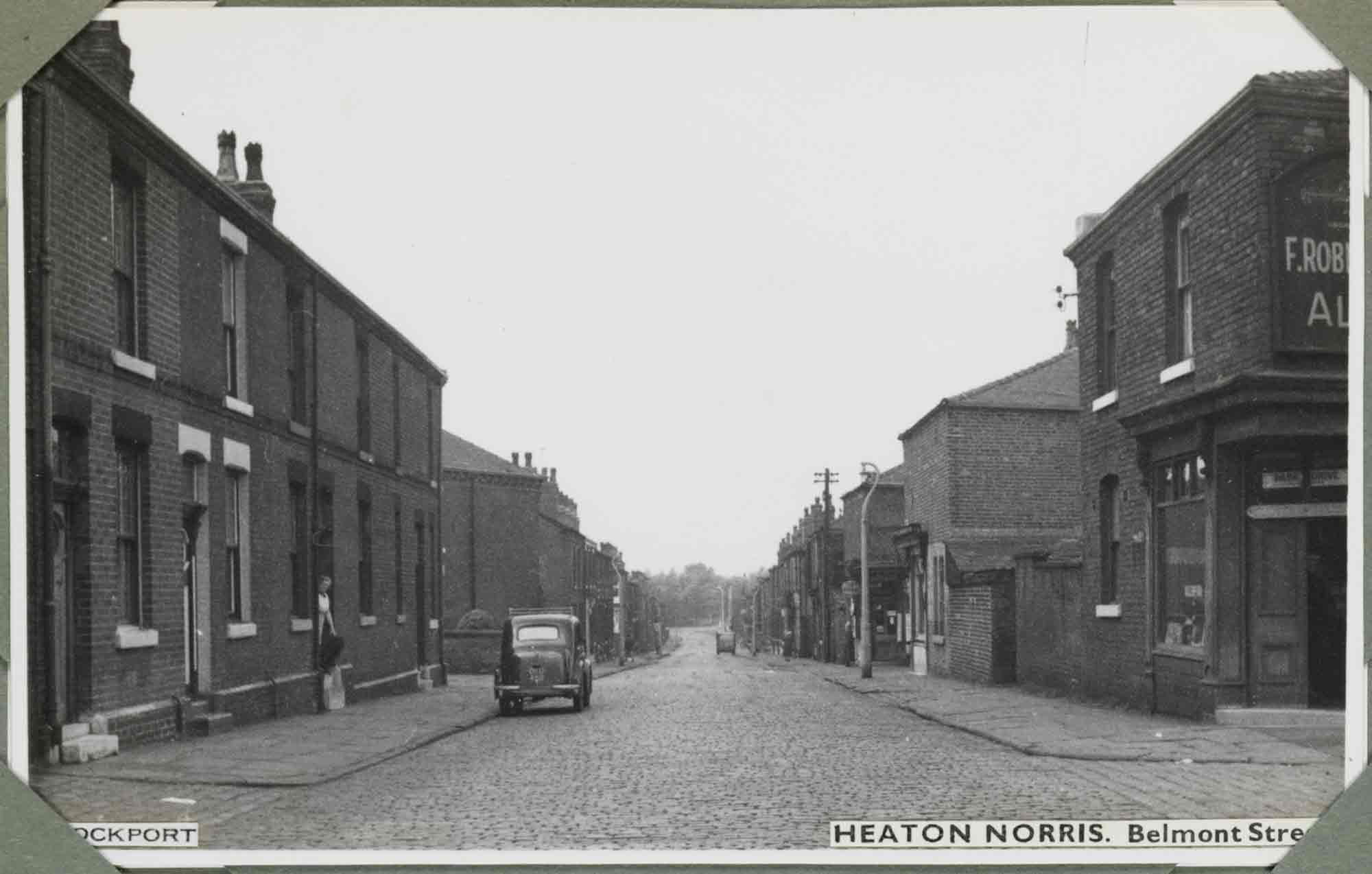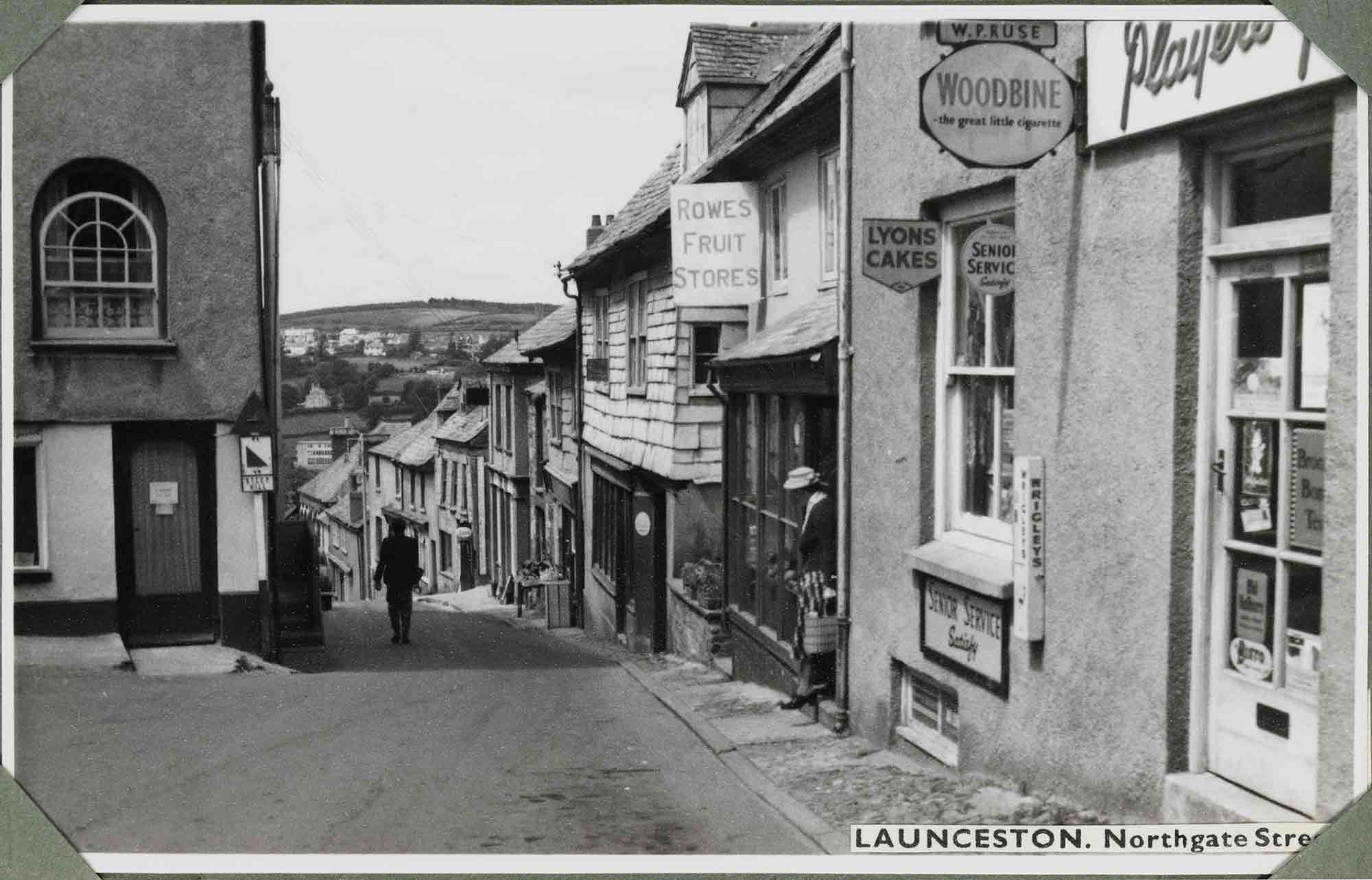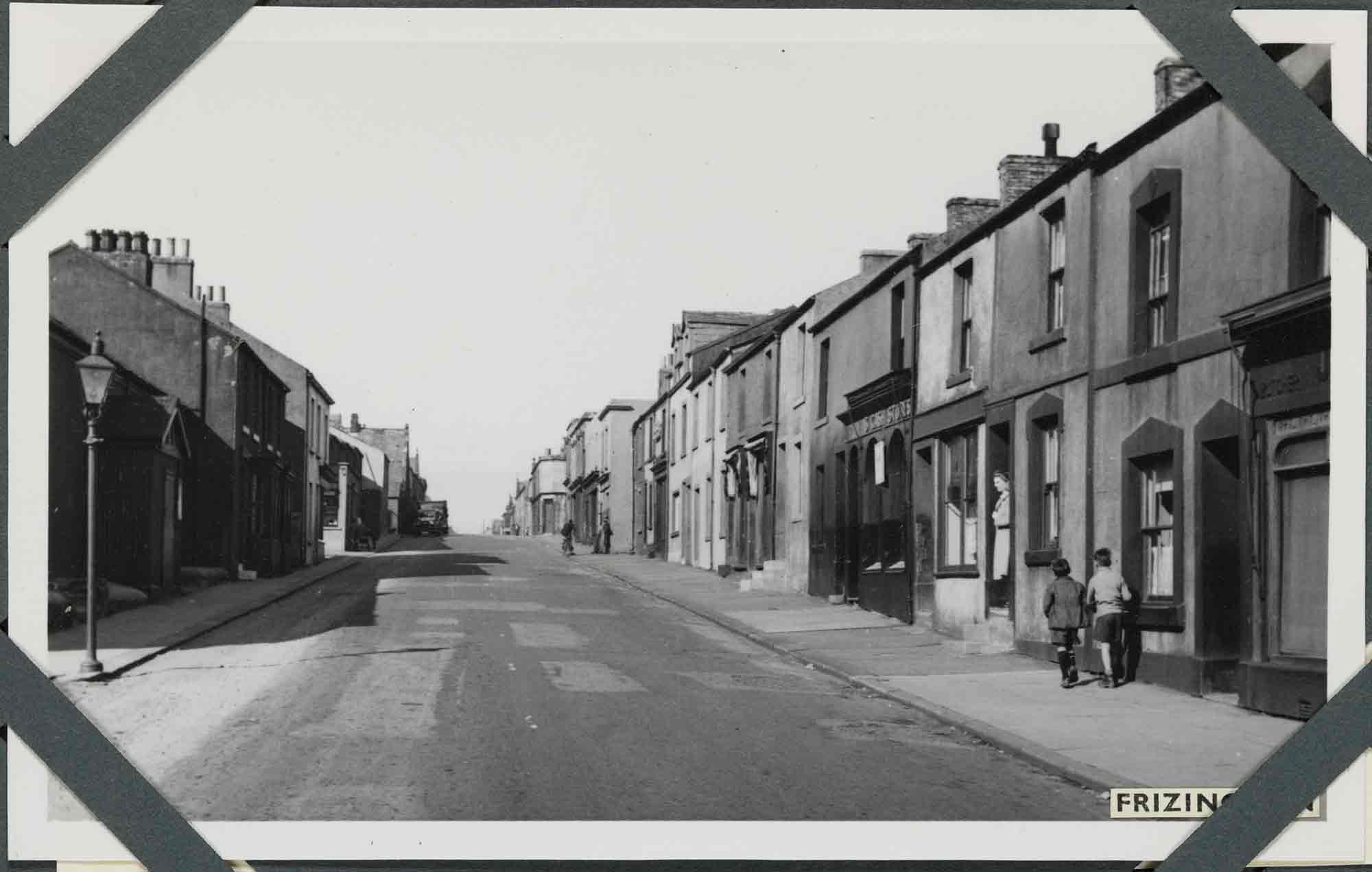A Judge on the High Street: The Sir John Pennycuick Collection
The Sir John Pennycuick Collection connects the High Court with the high street. This nostalgic collection of views of buildings and street scenes from the 20th century records terraces of houses, cobbled streets, shops and advertisements for Woodbine cigarettes and Bisto gravy.
From bustling street markets to peaceful village lanes. From residential streets, with their corner pubs and local shops, to portraits of churches and the odd modernist insertion. This collection reveals an eclectic mix of over 60,000 views compiled by Sir John Pennycuick, a tennis-loving barrister, High Court judge and amateur photographer.
From tennis court to High Court: Who was Sir John Pennycuick?
One of the really great judges of his generation.
Sir John Pennycuick was born in Camberley, Surrey on 6 November 1899. He went to school in Sandhurst and was later educated at Winchester College and New College, Oxford. Following service in the Coldstream Guards, Sir John entered the legal profession, qualifying as a barrister in 1925.
Around the time Sir John began performing in the law court, he started to make a name for himself on the tennis court. Between 1925 and 1931, he competed six times in the men’s singles competition at the Wimbledon Championships. His best years were 1925 and 1926 when he made it to the third round of the competition.
At the 1930 Wimbledon Championships, Sir John partnered his future wife Lucy Johnstone in the mixed doubles competition. They didn’t get past the first round, and it was the same result for Lucy and her sister Mie in the women’s doubles.
After the Second World War, Sir John’s legal career progressed. In 1947 he became a King’s Council – a senior barrister, and in 1954 he was elected a Bencher – a member of the governing body of one of the Inns of Court in London.
In 1960, Sir John was appointed a High Court Judge in the Chancery Division and received the customary knighthood. Despite retiring from full-time court work in 1974, Sir John continued to sit in the Court of Appeal, was appointed to the Privy Council and was Treasurer of the Inner Temple from 1978 to 1979.
Following his death at the age of eighty-two on 14 January 1982, Lord Scarman wrote of Sir John in ‘The Times’ newspaper:
Deceptively diffident in manner, he was possessed of a wit and an insight into human nature which made him not only a fine judge but a delightful and entertaining companion.
He deserves to be remembered as the very archetype of an English Judge and gentleman.
A service of thanksgiving for the life of Sir John Pennycuick was held at Temple Church on 22 March 1982.
A collector and keen amateur photographer
Sir John was an avid collector of picture postcards. He was also a keen amateur photographer. He used a German-made Rolleiflex camera, which was renowned for its simplicity and durability.
Sir John collected postcards of towns and buildings during his travels around Britain and Continental Europe. He put them into albums that were ordered according to location. His own photographs were made into postcard-sized prints that were also inserted into the albums.
The albums, or ‘vols’ as they were known by Sir John’s family, were enhanced with the addition of hand-drawn maps. These showed the counties and rural and urban districts featured in the album.
The part of the collection that includes coverage of places in England was bequeathed to the Royal Commission on the Historic Monuments of England (a predecessor to Historic England) in 1981. The albums of places beyond England were received by the Courtauld Institute of Art.
What’s in the collection?
The Sir John Pennycuick Collection contains around 60,000 images and 387 carefully compiled albums of postcards and photographs. It is an intriguing view of English streets and buildings, recorded from the viewpoint of a passionate amateur photographer and meticulous collector.
The postcards that Sir John collected date from around 1910. His own photographs were taken in the 1940s, 1950s, 1960s and possibly into the early 1970s. Unfortunately, they are not specifically dated.
Each of the albums in the collection is named and numbered on the spine and title page. A hand-drawn coloured map is inserted at the beginning of the album, showing viewers the areas covered in the following pages. These reflect the pre-1974 names and boundaries of the counties and districts represented in the album.
For example, the first Wiltshire volume features postcards and photographs of some of the county’s municipal boroughs, including Salisbury, Malmesbury, Wilton, Devizes, Marlborough and Calne. Boroughs that contain distinct settlements or areas are also grouped accordingly. Salisbury, for example, includes New Sarum, Fisherton, Bemerton, West Harnham and East Harnham.
Depending on the number of postcards and photographs collated for each place, up to four are inserted into each double-page spread.
The tactile nature of the postcard albums makes viewing the collection in person a very nostalgic and tangible experience.
What can I see in the photographs?
The content and the breadth of coverage in the Sir John Pennycuick Collection make for an enjoyable and useful resource for anyone interested in social history and the built environment of the mid-20th century.
Many of the individual buildings featured in the collection are ecclesiastical, from grand cathedrals to rural parish churches. There are historic bridges, market crosses and city gates. Perhaps most interesting and nostalgic are the general views of streets, many of which appear to have been taken by Sir John standing in the middle of the road.
The images show streets, the buildings that lined them, the vehicles that drove along them and the people who lived, worked, shopped and walked on them. Some views are relatively quiet, lacking people, traffic, signage, advertisements and road markings. Others are busier, showing the bustling nature of local high streets and marketplaces.
Many streets in England’s villages, towns and cities have changed greatly since Sir John recorded them in the decades following the Second World War. Reconstruction and redevelopment, often motivated by motor transport, have altered their appearance, changed their character and, in some cases, curtailed their very existence. The photographs in the collection offer insights into both subtle and comprehensive change in the urban environment.
The streetscape photography in the collection offers an insight into a recent past that currently still resides in the memory of living generations. However, it will not be too long before this changes, and Sir John’s photographs will then only exist in a time beyond our collective memories.
The Sir John Pennycuick Collection is a collection of the ordinary – the streets and buildings used and occupied by local communities throughout England, and some streets that were passed through briefly by others on their way to somewhere else. Its scope, content and its creator make the collection quite extraordinary.
A selection of photographs from the Sir John Pennycuick Collection
Please click on the gallery images to enlarge.
View the collection
You can either contact Archive Customer Services using the details given below to visit and view the Sir John Pennycuick Collection or browse selected images via our online catalogue.
Acknowledgements
The Historic England Archive would like to thank Mr Mark McConnell for kindly sharing information about the life and career of his maternal grandfather.
Sources
Lord Scarman, 1982, ‘Sir John Pennycuick’ in The Times, 22 January 1982, Issue 61138, p10
The quote from Christopher Heath can be found in ‘In Memoriam Sir John Pennycuick’, transcript of a hearing in the High Court of Justice, 15 January 1982
- Email [email protected]
-
Address
The Engine House,
Fire Fly Avenue,
Swindon,
SN2 2EH
- Phone number 01793 414600

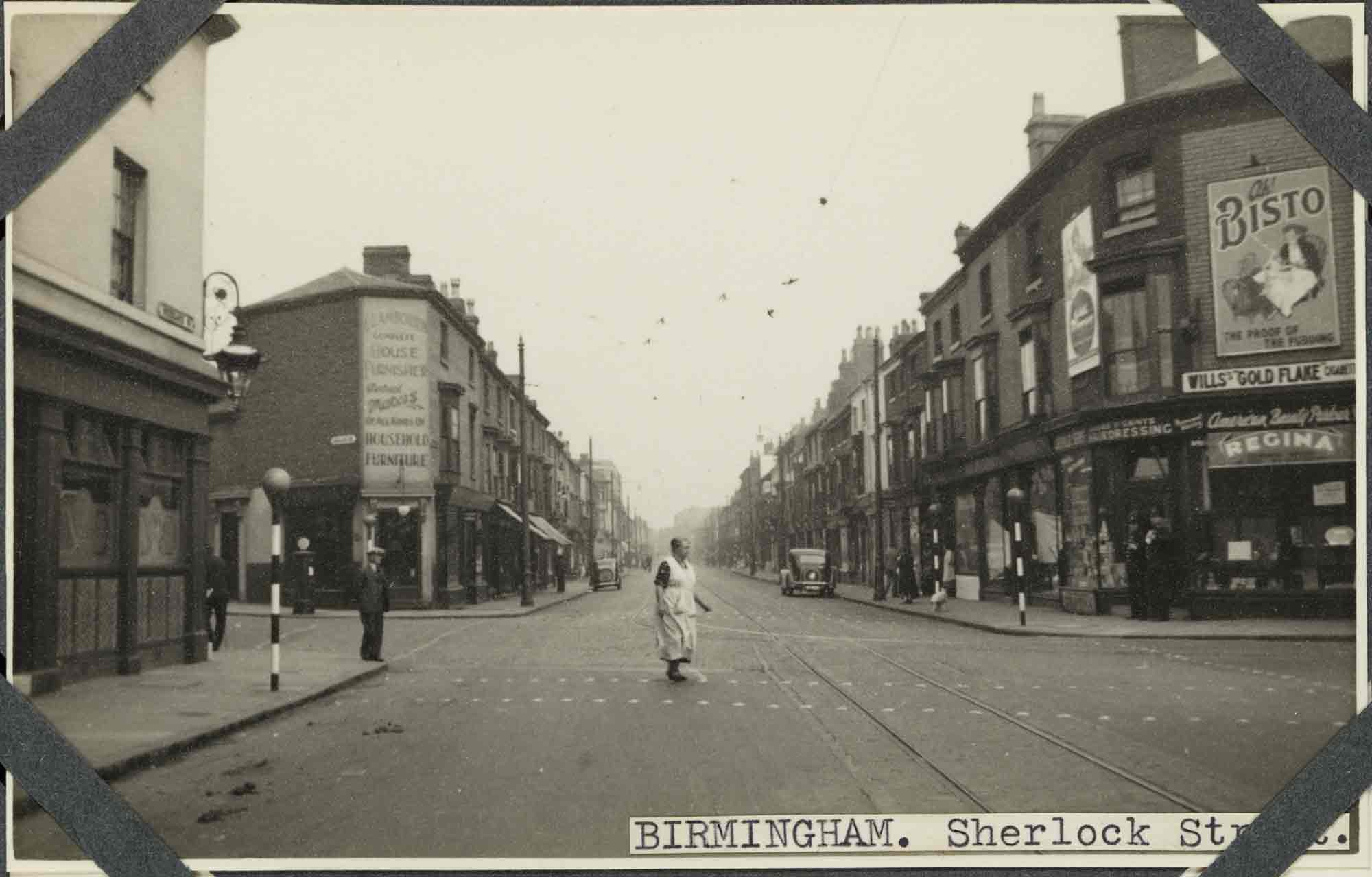
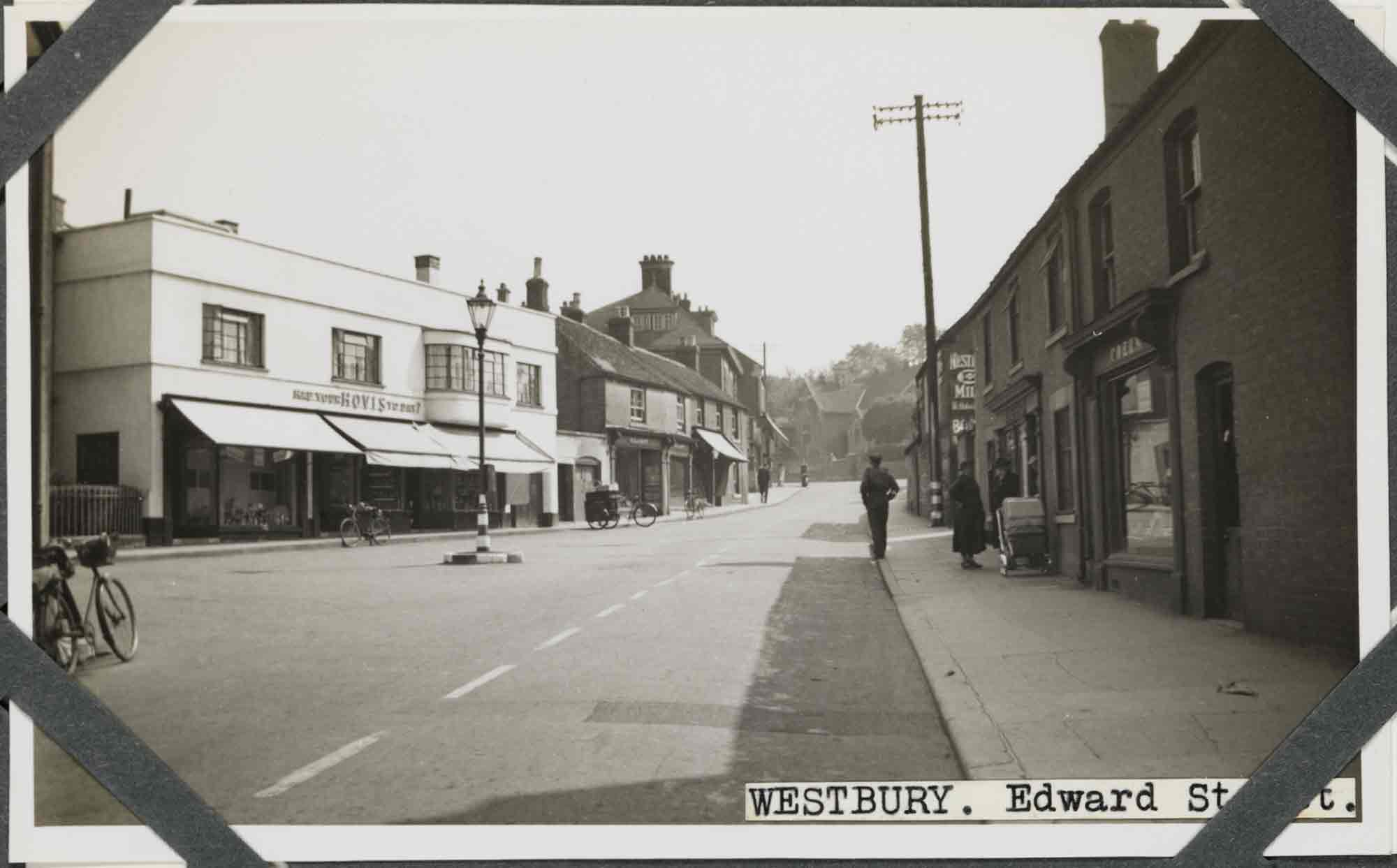
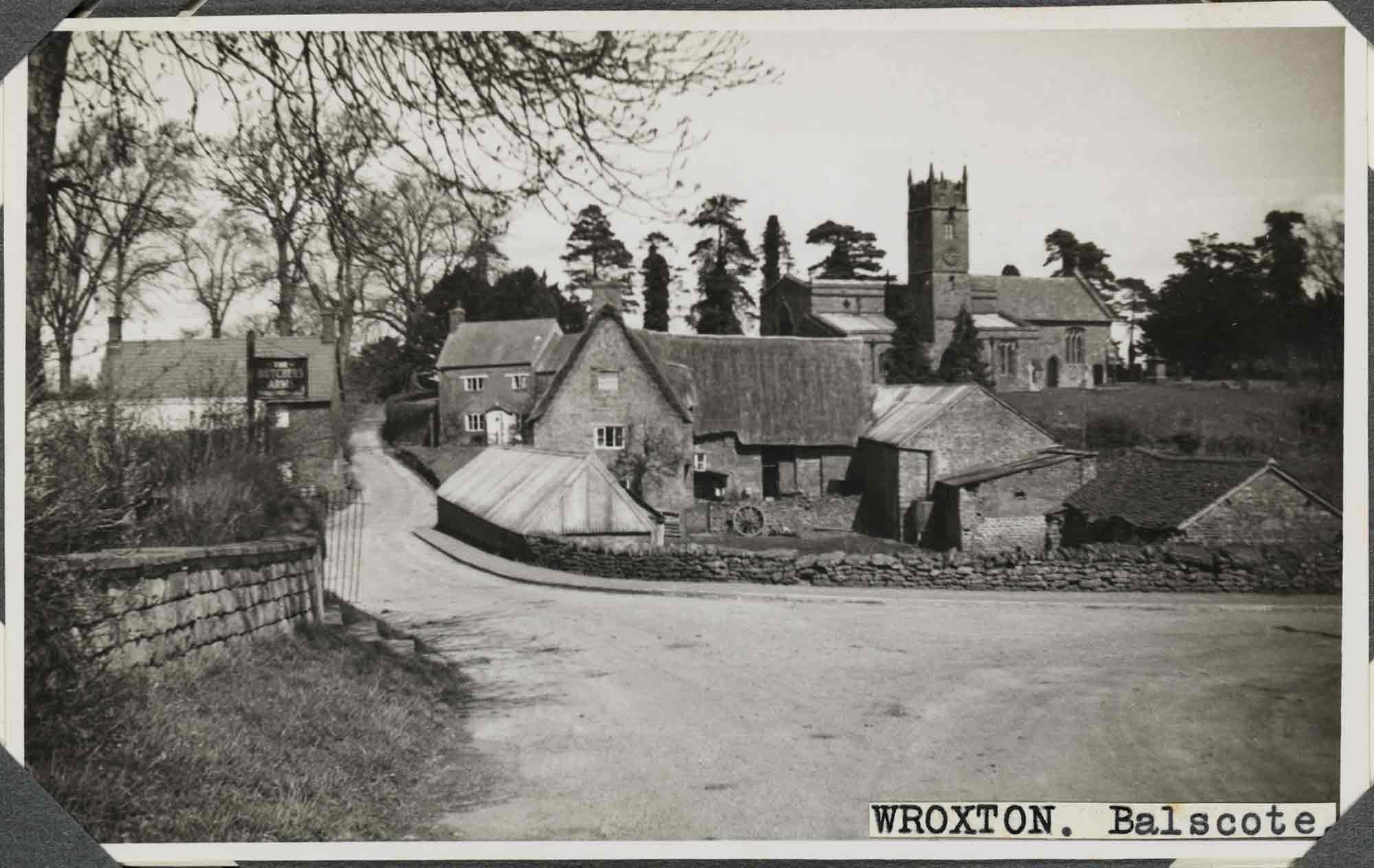
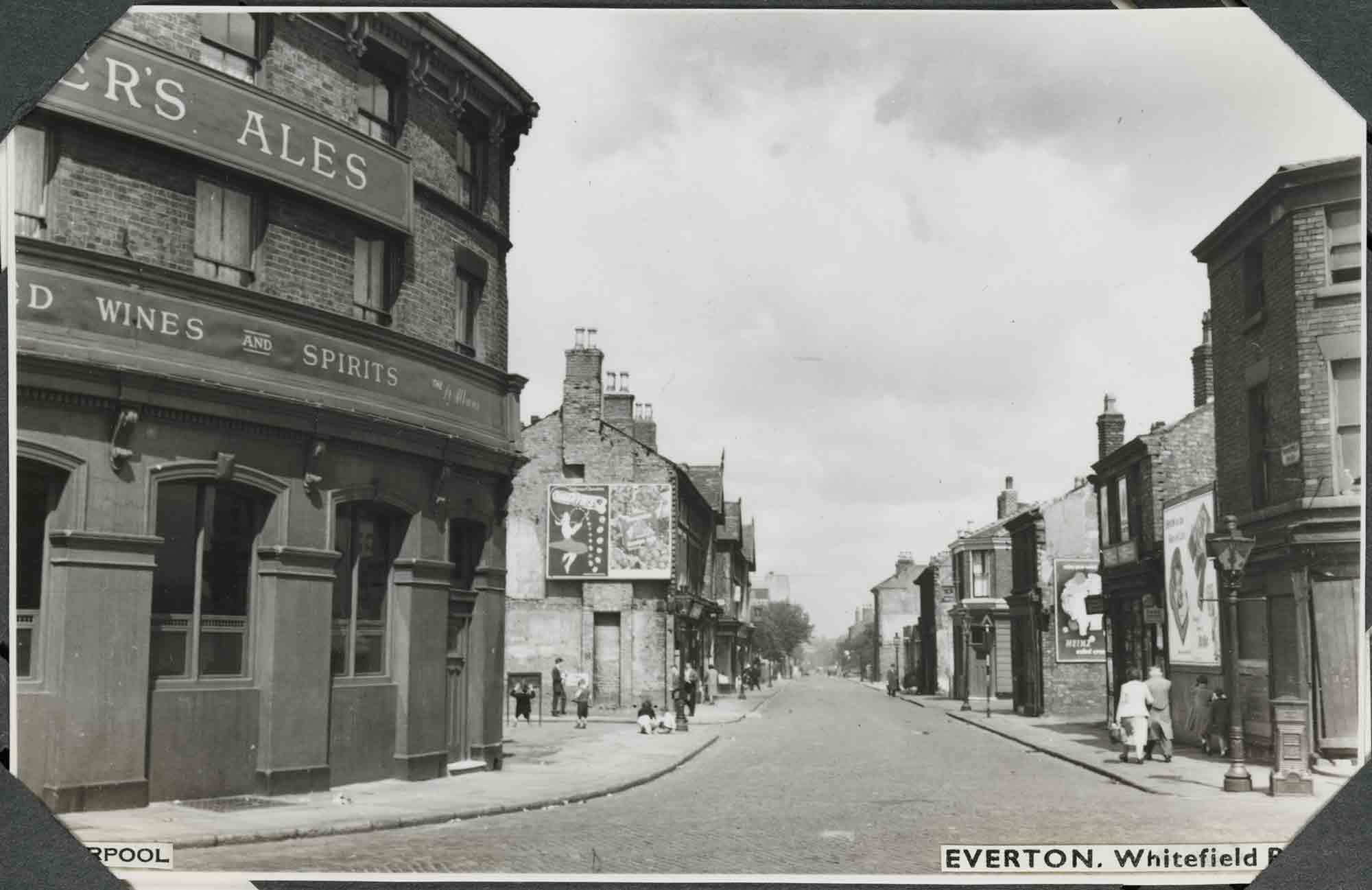
![Two women talk outside Lyle’s on the corner of King Street and Queen Anne Road in Maidstone, Kent. DTJ Lyle & Sons Limited had multiple premises in Kent, making mineral water and ginger beer. Black and white photograph of an urban street scene featuring two- and three-storey houses and commercial premises. A few people stand or walk along the pavement to the right of the near-empty street. Two women in long coats and hats stand on the corner of the street, outside a brick building that carries signs for 'Lyle's High Class Mineral Wate' [Water]. Above them, suspended from the first floor of the building is an oversized bottle. A label applied to the bottom-right of the photograph reads: 'Maidstone. King Street', part of which is obscured by one of four corner photograph album mounts.](/media/sfupcqjv/012-maidstone-king-street-pen01_15_01_29015.jpg?mode=max&quality=90&width=380&upscale=false&rnd=133106668813170000)
